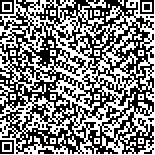| 摘要: |
| 泥螺(Bullacta exarata)作为黄河三角洲区域成功引入的滩涂养殖种类, 为当地获得了巨大的经济效益, 但对其生态影响还了解不多。为了解该区域泥螺体内重金属含量并评价其生物质量, 于2012年8月对该区域进行泥螺和沉积物样品采集调查和分析。采用富集系数K、残留量指数I以及金属污染指数IMP进行分析。结果表明, 黄河三角洲沉积物及泥螺体内6种重金属含量均相对较低, 多数符合国家海洋沉积物质量标准第一类。泥螺对不同重金属的富集系数K有明显差别, 其中对Cu 和Cd 的富集能力最强。残留量指数I富集系数K及金属污染指数IMP均表明, 黄河三角洲潮间带泥螺对重金属的富集程度均较低, 说明该海域泥螺未受到重金属离子的污染。根据国家生物质量标准分析, 黄河三角洲潮间带泥螺的生物质量总体较好, 生物体内重金属含量总体上与海水中重金属含量无显著的相关性。 |
| 关键词: 黄河三角洲 潮间带 泥螺(Bullacta exarata) 重金属评价 |
| DOI: |
| 分类号: |
| 基金项目:国家自然科学基金委中荷国际合作项目(NSFC 40976086);山东省科技发展计划项目(2011GGF01003) |
|
| Examination of trace metal contents and assessment of biological quality of mud snail Bullacta exarata from intertidal zone of Yellow River Delta, China |
|
|
| Abstract: |
| The mud snail Bullacta exarata (Philippi, 1848) belongs to the Atyidae, Gastropoda, Mollusca. It is commonly distributed in the intertidal zone along the coasts of Chinese seas, especially in Zhejiang and Shandong Province, and also in Japan and North Korea. B. exarata is surface deposit-feeding, and it has no clear preference for specific food types, and can consume sources including benthic diatoms, organic detritus, small Crustacean species and eggs of invertebrate (Yu et al, 2003). As a very important economic species, mud snail had been cultured since the 1980s in China, and many researches had been carried out on its behavior characteristics, reproductive biology and development, ecotoxicology, population characters and spatial distribution. B. exarata was firstly introduced to the Yellow River Delta in 2001 for aquaculture in the intertidal zone. Since then, the snail has quickly spread out in this area, and its harvest was up to 50 thousand tons in 2005, with the output value of 300 million Renminbi (RMB) and a net profit of 280 million. The aim of this paper was to investigate the current status of trace metal in the mud snail and to evaluate the biological quality. Samples of mud snail and sediment were collected at the intertidal zone of Yellow River Delta in August, 2012. The results showed that the concentrations of six trace medals both in the sediment and mud snail were relatively low. The accumulation of different trace metals by mud snail was different, of which, the Cu and Cd were the two dominant metals. Compared to the criterion of Chinese marine biological quality, the mud snail in the research area was safe for human beings. |
| Key words: Yellow River Delta intertidal zone mud snail trace metal assessment |
